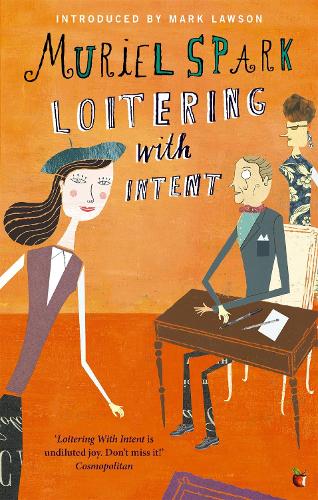
We meet Fleur Talbot sitting in a graveyard in Kensington writing a poem, when a young policeman approaches her. It’s 1949. Young Fleur, eager to collect experiences that she can use in her writing, rejoices in “how wonderful it feels to be an artist and a woman in the twentieth century.” She makes friends everywhere “almost by predestination.” When the friendship pales, she says, “You didn’t think of discarding them just because you didn’t altogether like them.”
Her friend Dottie—one of many hilarious and perfect names in this book—is ”a Catholic, greatly addicted to the cult of the Virgin Mary about whose favors she fooled herself quite a bit.” She seems unconcerned that Fleur is having an affair with her lackluster husband Leslie. Fleur says she loves him “off and on, when he doesn’t interfere with my poetry and so forth. In fact I’ve started a novel which requires a lot of poetic concentration, . . . So perhaps it will be more off than on with Leslie.”
Light-hearted Fleur gaily sidesteps small matters like having money for rent and other necessities while she finishes her first novel, Warrender Chase. When a friend finds her a job at the Autobiographical Association, helping its posh members write their memoirs, she is eager to observe them. The Association is the brainchild of Baronet Sir Quentin Oliver. He set it up so that the memoirs will not to be published for 70 years to avoid offending anyone named in them.
There we meet a truly quirky crew. The one who most delights me is Sir Quentin’s elderly and outrageous mother Edwina. She comes out with the most inconvenient truths and loses control of her bladder at will, much to Sir Quentin’s embarrassment. The two tangle constantly, and it is ruthless Edwina who usually comes out the winner.
Almost immediately Fleur becomes suspicious of Sir Quentin’s intent, eventually calling him a “psychological Jack the Ripper.” However, she believes in writing about terrible sins ”with a light and heartless hand. It seems to me a sort of hypocrisy for a writer to pretend to be undergoing tragic experiences when obviously one is sitting in relative comfort with a pen and paper.”
She’s surprised to find that Sir Quentin seems to become more and more like her protagonist Warrrender Chase. Then the lives in the memoirs she’s typing up begin to mirror other characters in her novel, leading Sir Quentin to threaten to sue her publisher to stop publication of her novel. She claims that her novel came first, but this slippery novel keeps you wondering who is making up what, and how on earth it will all work out.
It may be offbeat and joyful, but the novel offers plenty of plot twists—a stolen manuscript, suspicious deaths—and for those who care to look deeper, some interesting things to say about a writer’s purpose and methods, not to mention their sources of inspiration. Underlying the witty story is a Modernist conundrum about whether people give rise to literary characters or vice versa. How do we construct the selves we present to the world or to ourselves?
Or you can ignore all that and just enjoy the sparkling dialogue. The unexpected lurks around every corner, and you never know when Edwina will let loose a “fluxive precipitation.”
What Muriel Spark novels have you read?